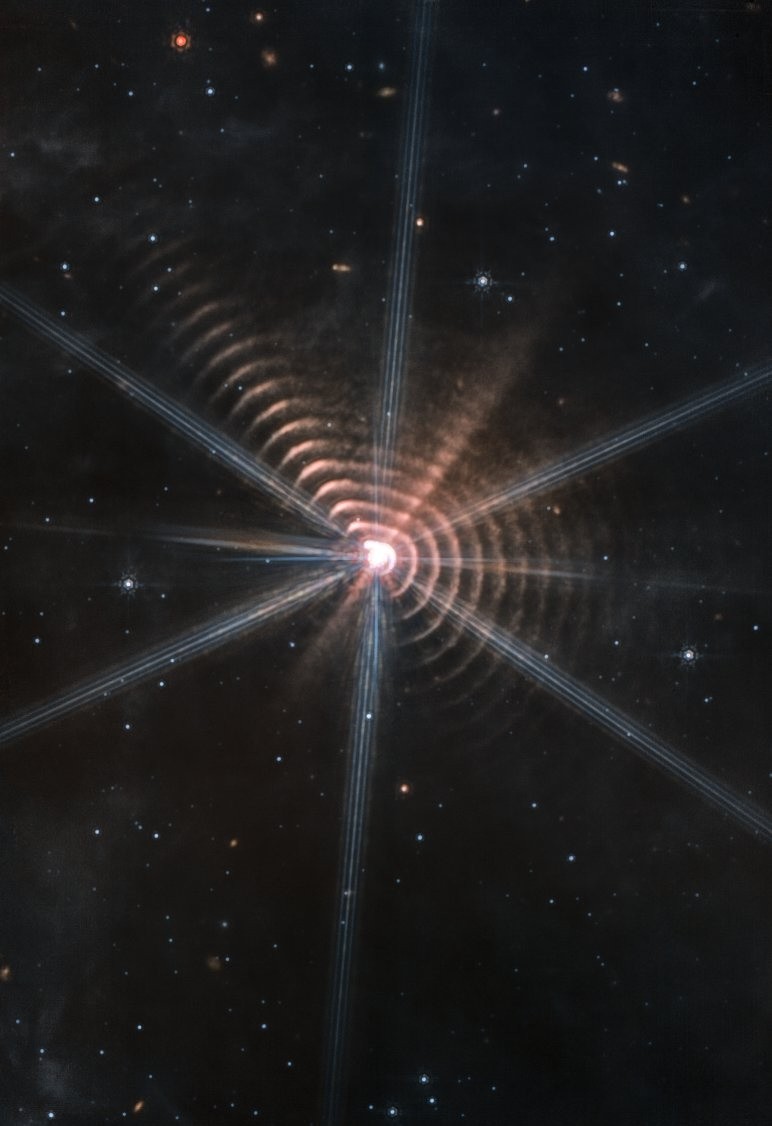Is it a clock in space? Is it the rings to cosmic heaven? This new image proves that deep space holds a treasure trove of wonders and mysteries that we continue to unravel thanks to the sharp infrared sight of NASA's James Webb Space Telescope.
The powerful telescope has discovered an extraordinary detail about the object in the image - a star located around 5,600 light-years away and encircled by what appear to be concentric rings of light radiating outward, according to a report by ScienceAlert.
Webb's distinctive diffraction spikes are not "real," but those concentric circles are, and there is a fascinating reason why.

Binary Pair of Rare Stars
ScienceAlert noted that the star is a part of a binary pair of rare stars located in the constellation Cygnus. As a result of their interactions, the binary pair releases precise periodic eruptions of dust that spread out in shells into the space around them.
Due to the infrared light of these dust shells, a device as sensitive as Webb's MIRI was able to identify them in fine detail.
A Wolf-Rayet star named WR 140 and a hot, massive O-type star partner, both extremely rare objects, make up the star. In short, the star is known as a colliding wind binary.
In the final stages of their main-sequence lives, Wolf-Rayet stars are extremely hot, incredibly bright, and ancient. They have a significant shortage of hydrogen, but are abundant in nitrogen or carbon, and are also rapidly losing mass.
O-type stars are among the most massive stars currently known in the cosmos. They are also extremely hot and luminous, and because of their massive nature, they have short lifespans.
The WR 140 system's two stars both produce strong stellar winds that blow out into space at a rate of about 3,000 kilometers (1,864 miles) per second. As a result, both are losing bulk at a relatively rapid rate.
Read Also : NASA's James Webb Space Telescope Captures the Glowing Heart of the Phantom Galaxy in Majestic Detail!
Intriguing Elliptical Orbits
ScienceAlert said that the stars' elliptical orbits are particularly intriguing. The stars do not have neat circles around each other, instead, they have ovals with a point that indicates the furthest distance between the pairs (apastron) and the point where they are closest to each other (periastron).
The two stars get close enough to collide when they get into periastron, which is about a third farther than the Sun and Earth's distance between each other.
As a result, the material surrounding the stars experiences shocks, which accelerate particles and create intense radiation like X-rays. They also produce episodes of dust formation once the material in the colliding stellar wind cools down.
What is seen in Webb's photograph resembles a sequence of bubbles, wherein the edges of each dust shell are more noticeable because it is focusing on a denser concentration of material.
The wind impact and dust creation happen regularly every 7.94 years because of the binary star's 7.94-year orbital cycle. The Webb image has around 160 years' worth of dust shells with 20 visible rings.
Related Article : NASA's James Webb Space Telescope Snaps the Enchanting Turmoil of 'Cartwheel Galaxy' With Crisp Details!
This article is owned by Tech Times
Written by Joaquin Victor Tacla
![Apple Watch Series 10 [GPS 42mm]](https://d.techtimes.com/en/full/453899/apple-watch-series-10-gps-42mm.jpg?w=184&h=103&f=9fb3c2ea2db928c663d1d2eadbcb3e52)



